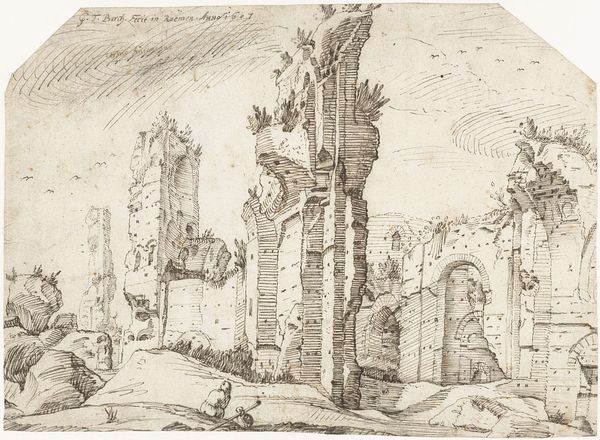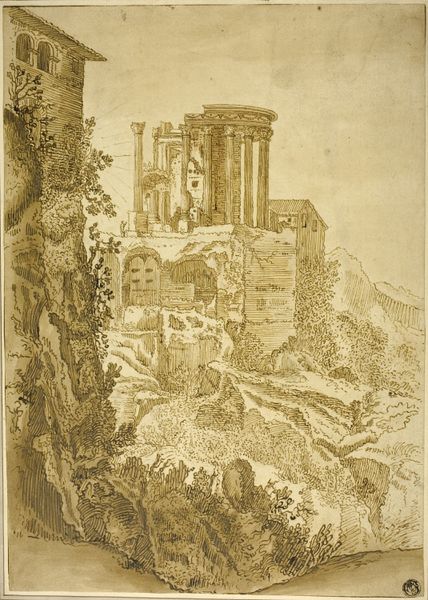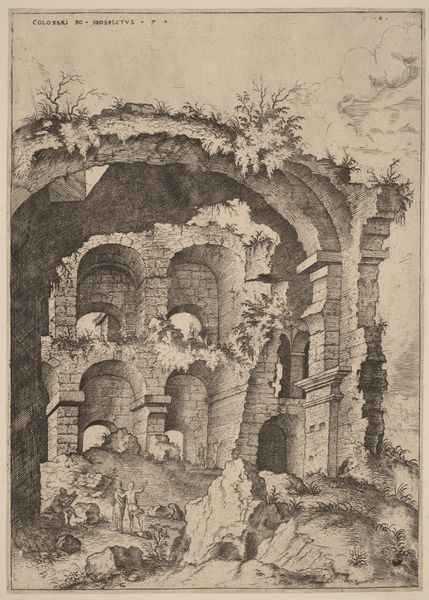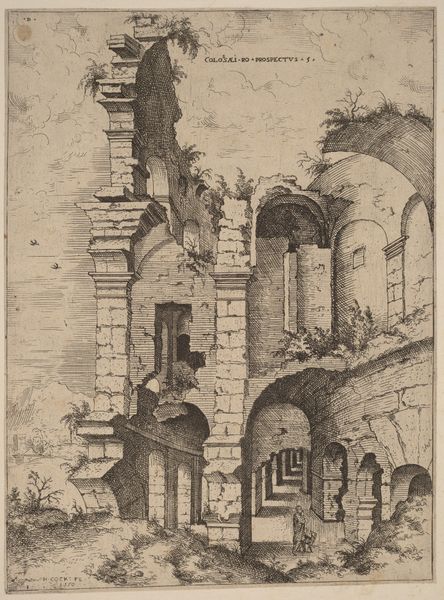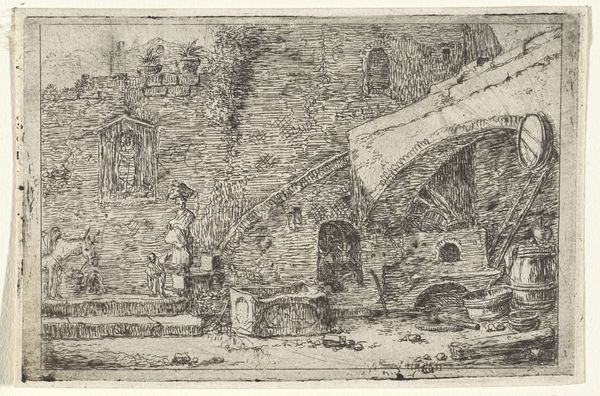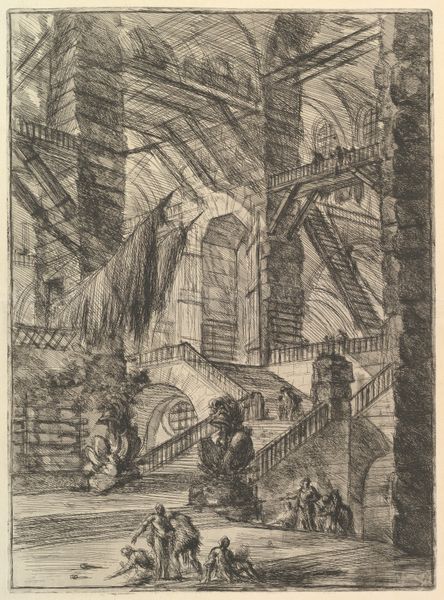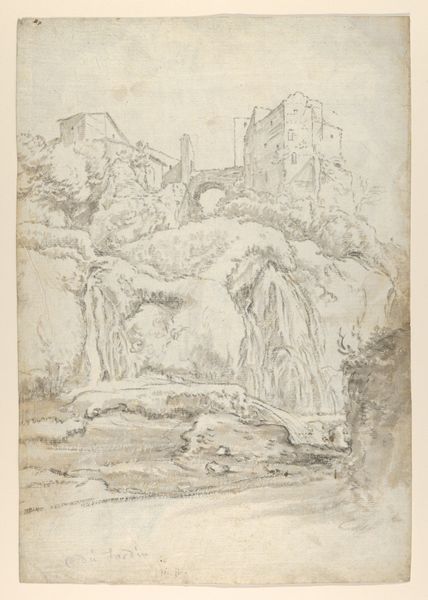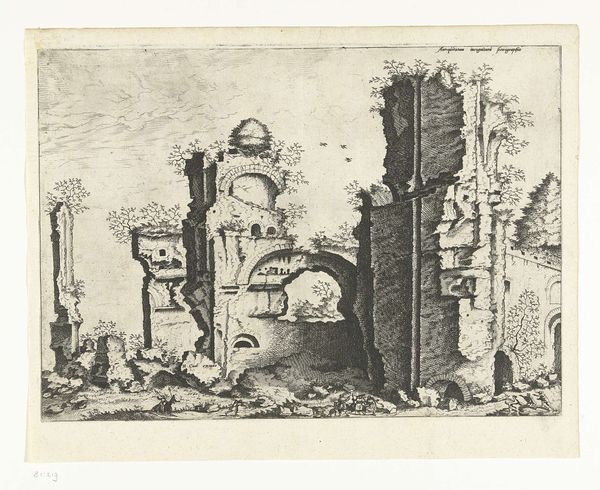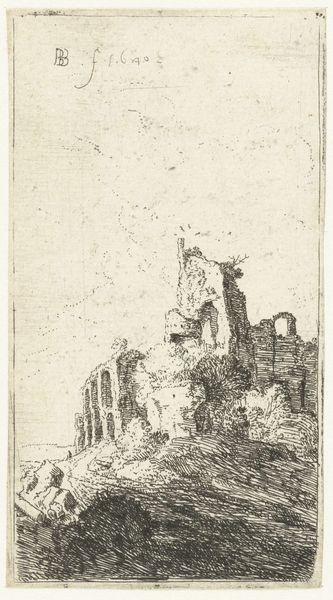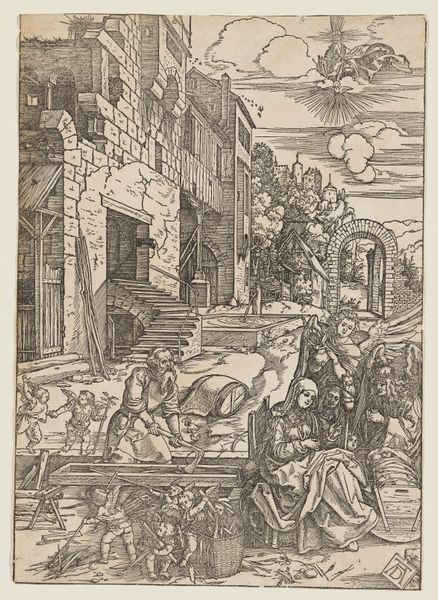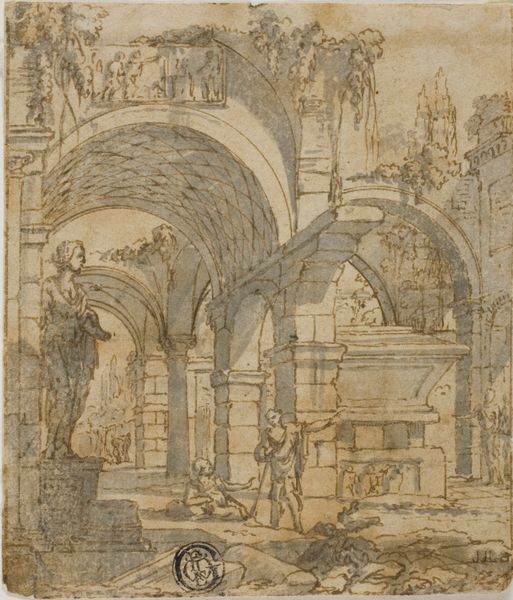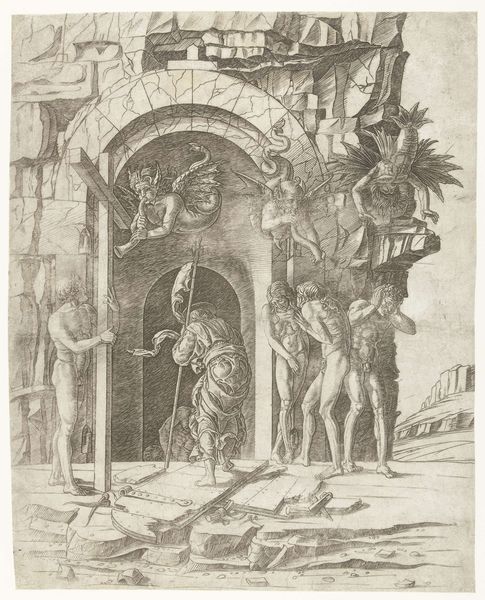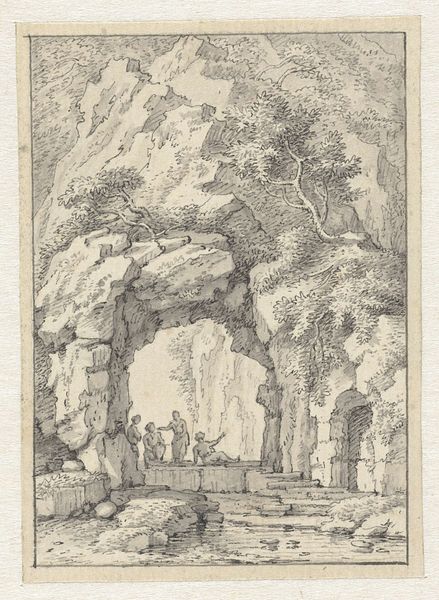
Ruins of the palace substructures of Septimius Severus, Rome c. 1607 - 1609
0:00
0:00
print, etching
#
baroque
# print
#
etching
#
landscape
#
etching
#
cityscape
#
history-painting
Dimensions: height 202 mm, width 176 mm
Copyright: Rijks Museum: Open Domain
Editor: So, this etching by Gerard ter Borch the Elder, created around 1607-1609, depicts the "Ruins of the palace substructures of Septimius Severus" in Rome. There's a solitary figure in the midst of all this decaying grandeur. What does it all signify, really? Curator: That figure is key. Ter Borch places this contemporary character within the skeletal remains of Roman power. It highlights the temporal nature of empires and questions the perceived permanence of authority, doesn't it? Editor: So, it's not just a picturesque scene of ruins? It’s a commentary? Curator: Absolutely! Consider the context: this work emerges during the Baroque period, a time of intense socio-political upheaval and religious conflict. How might the "ruin" become a symbol for thinking through these issues? Editor: I guess it makes me think about the power dynamics at play and how nothing lasts forever. Even empires crumble. Curator: Precisely. Ter Borch isn't simply showing us ruins; he’s prompting us to question power structures. It asks, what is built upon whose backs, and who bears the cost when it all crumbles? Editor: That's a powerful way to look at it. It shifts my understanding of this print completely. Curator: This piece uses a very eurocentric view on the topic of the fleeting nature of empires. Now I am asking, where are artworks showing that Rome and Europe, too, are built atop "ruins" of other cultures that were conquered along the way? Editor: Food for thought. Thanks for sharing your expertise with me today, it really changed how I perceived this image. Curator: The pleasure was all mine. It is a needed discussion for a time when the meaning of art is rapidly shifting under new interpretations.
Comments
No comments
Be the first to comment and join the conversation on the ultimate creative platform.
